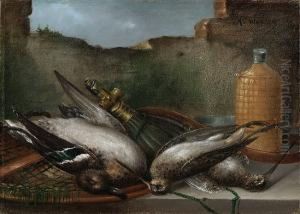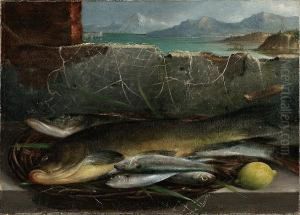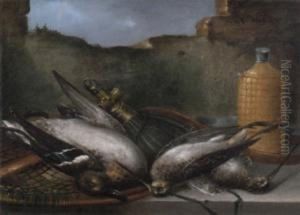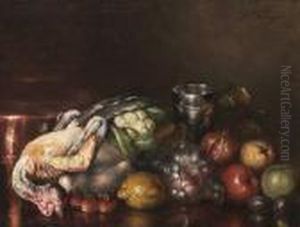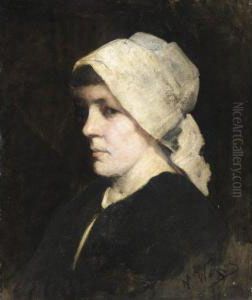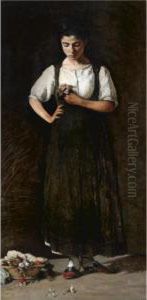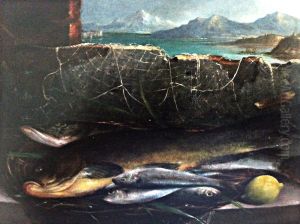Nikolaos Vokos Paintings
Nikolaos Vokos was a Greek painter, associated with the so-called Munich School, a group of Greek artists who studied or were influenced by the Royal Academy of Fine Arts in Munich during the late 19th century. Born in the island of Spetses, Greece, in 1854, Vokos grew up in an environment that was significantly affected by the Greek War of Independence, which had palpable historical connections to his birthplace.
Vokos's artistic journey began in Greece, but he soon moved to Munich to further his education in the arts. Munich was a major center of art and culture at the time, attracting numerous Greek artists who would later return to their homeland and contribute to the modernization of Greek art. Vokos studied under the tutelage of notable figures such as Nikiforos Lytras, who was one of the most important Greek painters of the 19th century and played a crucial role in the development of Greek artistic movements.
Upon completing his studies, Vokos returned to Greece, where he became an active participant in the country's art scene. His works often depicted historical themes, landscapes, and portraits. He was known for his ability to capture the essence of the Greek landscape and the spirit of its people. His style was characterized by a harmonious blend of academic realism and the emergent impressionistic tendencies, which were becoming increasingly popular at the time.
Vokos's contributions to Greek art were significant, and he was among the artists who helped to lay the groundwork for modern Greek painting. His work was celebrated for its technical proficiency and its emotional depth, particularly his ability to infuse historical and mythological subjects with a sense of immediacy and vitality.
Sadly, Nikolaos Vokos's life was cut short when he passed away in 1902, but his legacy lived on through his artworks, which continue to be appreciated for their historical value and artistic merit. His paintings can be found in various art collections, galleries, and museums in Greece and across the world, where they serve as a testament to the rich cultural heritage of Greece and the enduring talent of its artists from the Munich School era.

